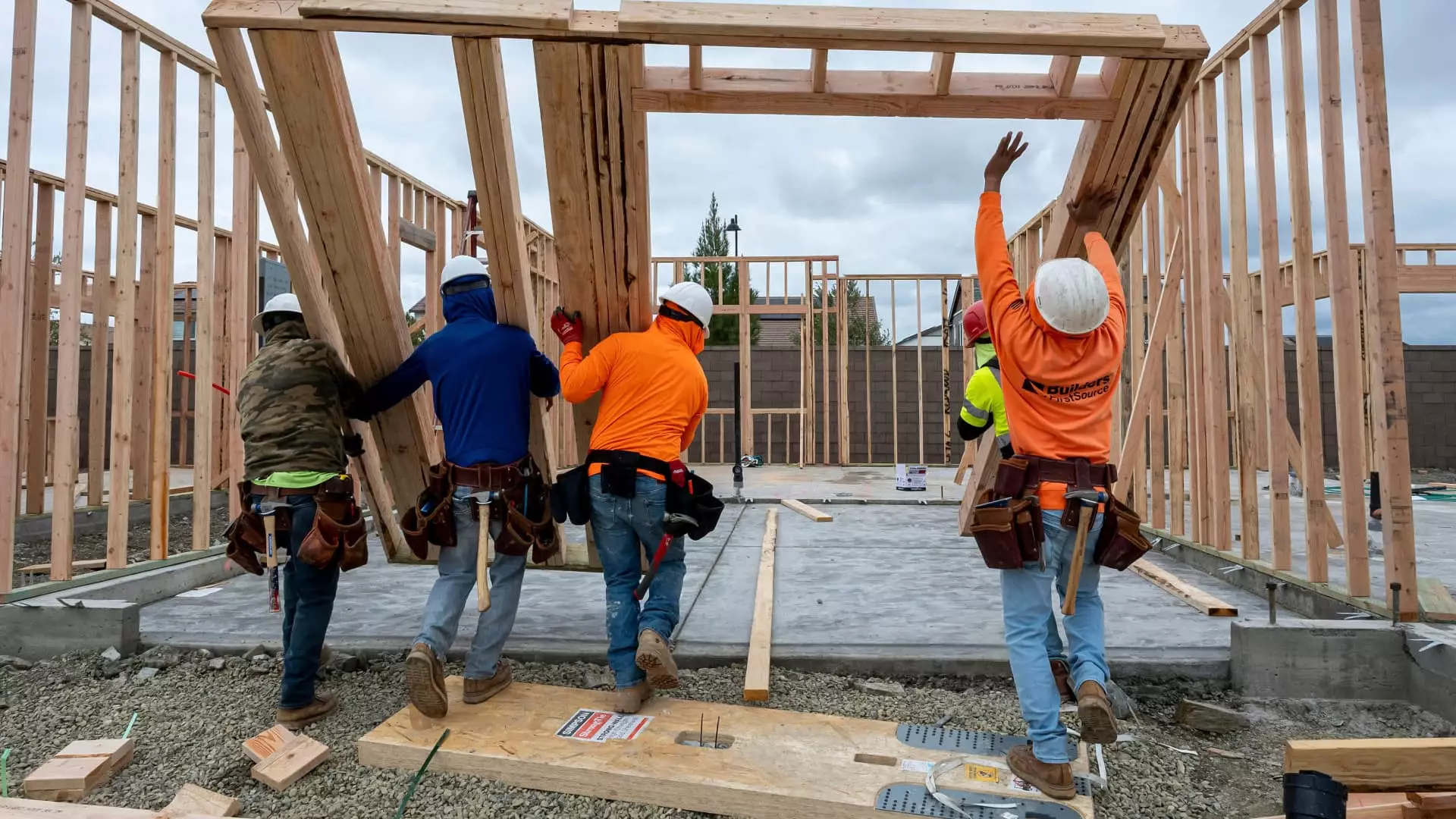As we navigate through the tumultuous waters of the housing market in 2023, an alarming trend emerges: builder sentiment is taking a significant hit. The National Association of Home Builders (NAHB) recently reported a stark decline, with their Housing Market Index (HMI) dropping to an insufficient 32. Anything below 50 is indicative of a negative outlook, and this unsettling figure reflects the concerns consumers are vocalizing about rising mortgage rates and economic instability. The question pressing on the minds of industry experts is: at what point does this spiral become too severe for the market to recover?
Interestingly, expectations were leaning towards a modest increase in sentiment, fueled by the political climate’s shifts — particularly with recent tariff negotiations and policy recalibrations by the previous administration. However, the issue of mortgage rates, which surged from a historic low during the pandemic, now puts consumers and, consequently, builders, in a vice grip of hesitation. The fact that we are seeing numbers that echo the market turbulence of early 2020 is not just concerning; it’s downright terrifying.
Sales Expectations Plummeting
Digging into the index further reveals that not only is current sales sentiment dire, but future projections are equally bleak. Buyer traffic has dropped to an astonishing 21, the lowest figure recorded since late 2023. This isn’t merely a trivial detail; it’s the heartbeat of the market faltering under pressure. Leading builders like Buddy Hughes are echoing a narrative reflecting widespread concern—buyers are retreating to the sidelines, steered by high mortgage rates and a pervasive sense of economic uncertainty.
To combat this discouraging atmosphere, builders are responding by slashing prices. An astounding 37% reported price cuts in the last survey. This is a staggering increase from the previous months and magnifies a deeply rooted issue in the market: affordability. The average price reduction remains a steady 5%, which may not seem significant on the surface, but it encapsulates a larger pivot away from the resilient pricing structures that some builders clung to amidst the pandemic boom.
Rising Inventory Straining the Market
The crux of the issue lies in the balance between supply and demand. The recent spikes in inventory threaten to flood the market, creating conditions where potential buyers either feel overwhelmed or apprehensive. Robert Dietz, NAHB’s chief economist, pointedly states, “Weakening price growth in most markets and price declines for resales in a growing number of markets” are evident consequences of this excess inventory. The implications of this trend are staggering: more unsold homes equal a more dire economic forecast for builders and the entire housing sector.
Interestingly, these dynamics don’t just affect small builders; even giants like Lennar are feeling the squeeze. The reported nearly 9% drop in average home prices year-over-year starkly illustrates that no one in this sector is immune to the harsh realities of rising costs and diminishing consumer confidence. The outlook for 2025, as per predictions by NAHB, anticipates a further decline in single-family homes starting, raising eyebrows across the industry regarding sustainability.
Bibles, Tariffs, and an Insecure Environment
Let’s not ignore the role of government policy in this evolving narrative. Tariff negotiations could be ripe for exploitation, yet they remain a source of disillusionment for many builders whose businesses hinge on stable costs. Instead of serving as a safety net, they pose threats that consumers and builders alike fear will only exacerbate the downturn. We exist in a climate where politics dictate market strength, and the ramifications are as unpredictable as they are significant.
Amidst all this, the center-right wing liberal perspective advocates for a balanced approach to regulation and lower taxes to stimulate growth without sacrificing affordability. Homeownership should remain a beacon of stability in society, not a luxury reserved for the affluent. The declining builder sentiment must serve as a wake-up call for all stakeholders to revisit their practices, policies, and priorities if we are to cultivate a healthy housing ecosystem.
In the end, while the statistics paint a troubling picture, it’s essential to confront these issues head-on. Addressing the fears that keep consumers at bay can reignite the pulse of the housing market, breathing life into a sector at risk of drowning in uncertainty. Without decisive action, the implications of continued stagnation could echo far beyond 2023.


Leave a Reply